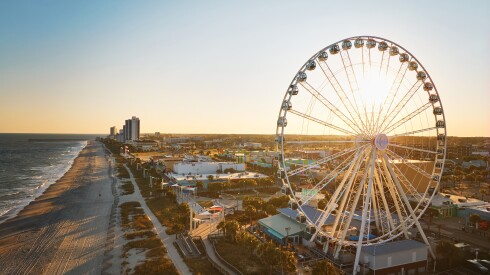Nearly 70 years after her death, Frida Kahlo remains one of the most recognizable, and mythologized, figures in art history. Though her face, framed by bold brows and often floral headdresses, frequently adorns everything from mural walls to tote bags, less is known about the making of the artist. However, a new museum in Mexico City is attempting to change that by sharing a new chapter in her story.
Opened September 27 in the heart of the Coyoacán neighborhood of Mexico City, the Museo Casa Kahlo—also known as Casa Roja—offers an intimate counterpoint to the famous Casa Azul, Kahlo’s longtime residence and more recently a popular museum (officially known as Museo Frida Kahlo). The two museums are adjacent to each other.
While Casa Azul focuses on her adult life, including her artistic achievements and her marriage to Diego Rivera, a famed Mexican muralist, the new museum delves into her early years and the familial influences that shaped her (with a strong focus on her father, Guillermo Kahlo, a photographer who is often credited for nurturing his daughter’s artistic passion). The project is spearheaded by Kahlo’s descendants, including her grand-niece Mara Romeo Kahlo and great-grand-nieces Frida Hentschel Romeo and Mara Deanda Kahlo, who aim to present a more personal and comprehensive narrative of Kahlo’s life.

The new Museo Casa Kahlo is also known as the ‘Casa Roja.’
Photo by Rafael Gamo/Courtesy of Rockwell Group
“This is a dream long held by our family,” said Mara Romeo Kahlo in a press release. “Frida’s legacy belongs to the world, but it begins here—on this land, in these homes, and in the culture that shaped her. Museo Casa Kahlo will allow us to tell new stories, share family secrets, host new voices, and build a future that honors her spirit.”
Visitors to Museo Casa Kahlo will have the opportunity to view never-before-seen personal artifacts, such as letters, childhood photographs, Kahlo’s first oil painting, and her only known mural. The museum will also feature rotating contemporary exhibitions from Mexican, Latin American, and female artists.
The establishment of Museo Casa Kahlo is supported by the newly formed Fundación Kahlo, a nonprofit organization based in New York that will oversee the museum’s development and operations. In addition to this museum project, the group plans to invest in Latin American and Indigenous art through grants and monetary prizes. Currently, there are no concrete collaborations established between Museo Casa Kahlo and Museo Frida Kahlo, the latter of which is managed by a trust under the Central Bank of Mexico (the building was donated to the state following Kahlo’s death in 1954).
By offering locals and visitors a deeper understanding of the artist beyond her widely recognized works, Asami Robledo-Allen Yamamoto, director of education and outreach at Latinos in Heritage Conservation, a nonprofit organization dedicated to preserving and celebrating Latinx heritage, said the new museum allows fans to “expand how we understand her legacy—not only as a symbol of Mexican identity and artistic innovation but as a deeply complex, multilingual, politically engaged feminist who lived with chronic pain.”

Guests can get some fresh air in the central courtyard at Museo Casa Kahlo.
Photo by Rafael Gamo/Courtesy of Rockwell Group
“Dedicating space to Frida’s work opens the door to essential conversations about embodiment, illness, culture, and resilience,” Robledo-Allen Yamamoto told Afar. “Museo Casa Kahlo can serve as a dynamic site of dialogue, inviting new generations to interpret her work through evolving cultural narratives and lived experiences—especially those rooted in the communities Frida called home.”
Beyond Museo Frida Kahlo and Museo Casa Kahlo, travelers can see Kahlo’s work throughout Mexico City. Her renowned painting The Two Fridas hangs at the city’s Museo de Arte Moderno, while The Broken Column and Henry Ford Hospital are some of her works on display at Museo Dolores Olmedo. There’s also the Museo Casa Estudio Diego Rivera y Frida Kahlo, a museum complex with a small selection of works that once served as the studio and residence for both Kahlo and Rivera.
The new Museo Casa Kahlo is located at Aguayo 54 in the Coyoacán neighborhood of Mexico City, and is open Wednesday through Monday, 9 a.m. to 7 p.m. It is closed on Tuesdays. Guided tours will be available from 9 a.m. to 4:50 p.m, with free tours available from 5-6 p.m. Tickets are available online.
This article was originally published on June 6, 2025 and most recently updated on September 27, 2025, with current information.











